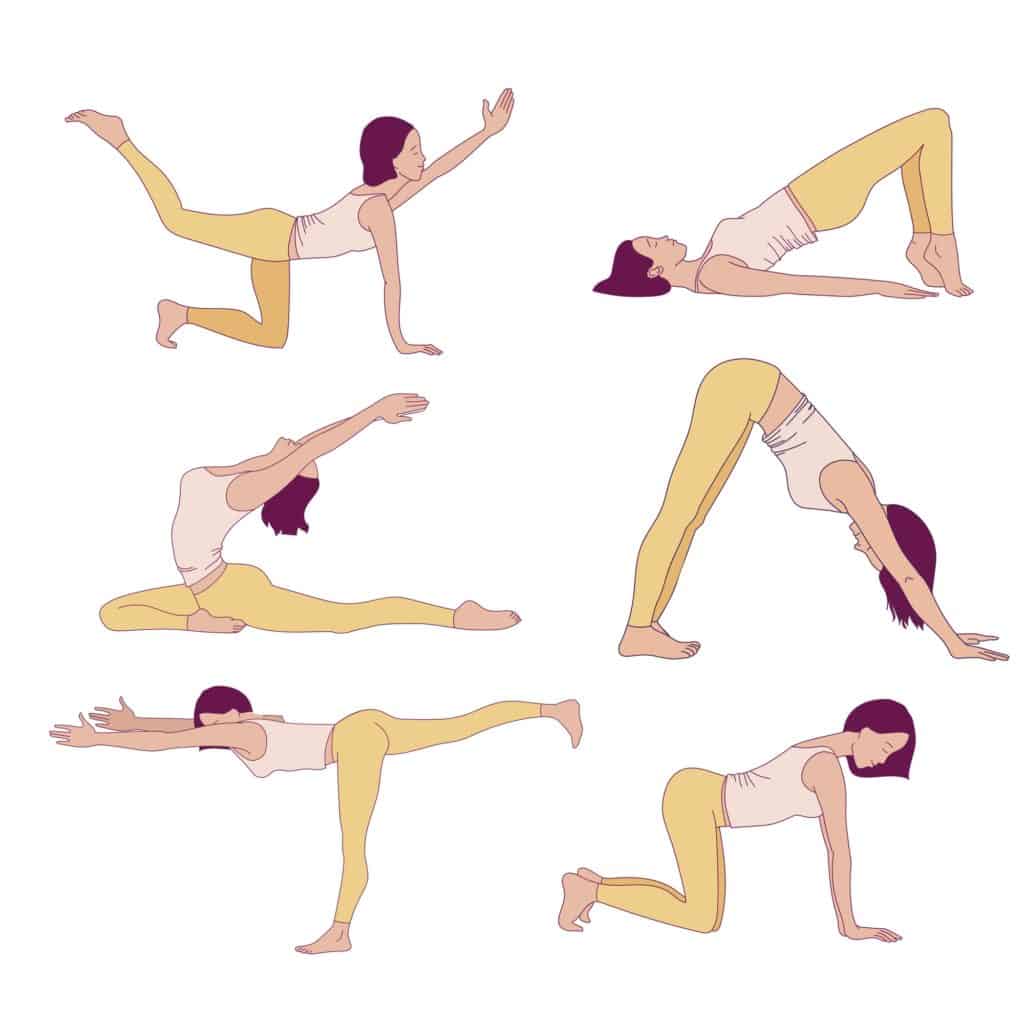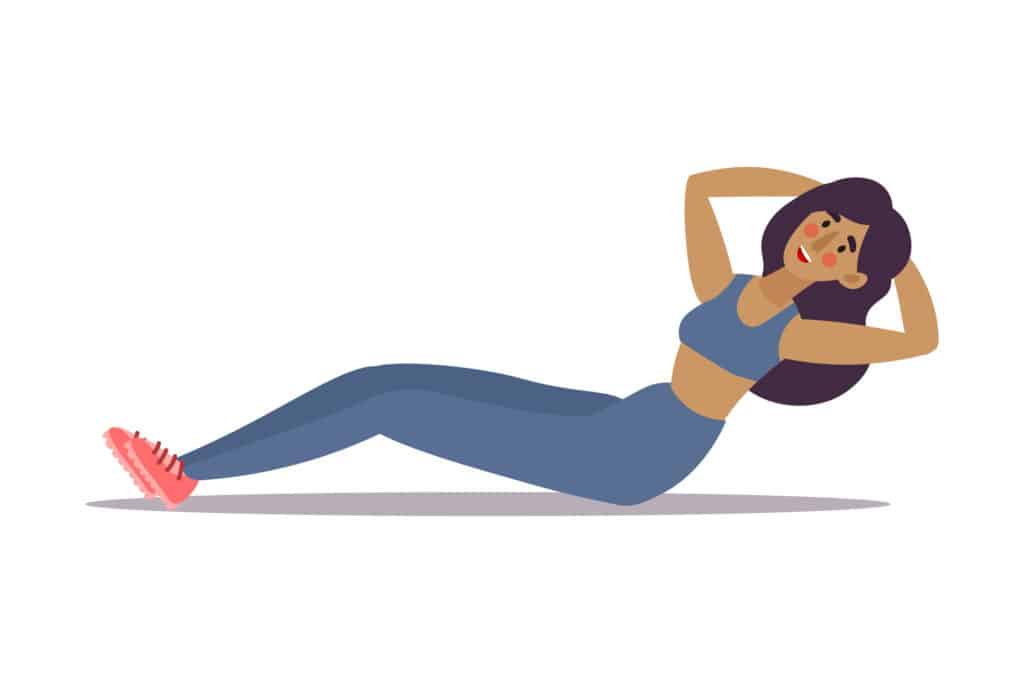
Every woman should know how to strengthen her pelvic floor muscles.
If we were taught how to do it at school, we could avoid many embarrassing problems that naturally start to occur after childbirth and from mid-life onwards when your pelvic floor muscles are weakened.
According to The Pelvic Floor Disorders Network: “A quarter of all adult women in the US report at least one pelvic floor disorder.”
So, if you struggle with incontinence or a pelvic organ prolapse of any kind – caused by weak pelvic floor muscles, you’re not alone.
The pelvic floor muscles are a group of muscles that support the pelvic organs. They assist with passing urine at regular intervals and starting and stopping its flow. Also, good, strong pelvic floor muscles contribute to a healthy sex life – helping to increase the frequency and intensity of orgasms. So, working on strengthening your pelvic floor muscles is beneficial for many reasons – from preventing urinary and fecal incontinence to improving your sex life.
Women’s pelvic floor muscles can weaken for various reasons – from pregnancy and childbirth to a sedentary lifestyle, obesity, or advancing age. But, even if you have super-strong pelvic floor muscles now – it’s essential to maintain that strength as you age.

How To Locate Your Pelvic Floor Muscles
The pelvic floor muscles are shaped like a bowl, stretching from your pubic bone to the tailbone. Locating the pelvic muscles is easy. For example, when seated position: imagine that you are “squeezing” and stopping the flow of urine. The muscles you feel when you squeeze are your pelvic floor muscles.
Please do not do this while actually urinating as there has been evidence to suggest this can be disadvantageous to the kidneys.
Remember, only try to do this if there is no additional discomfort when you do so. To help strengthen these muscles, you can repeat this process intermittently throughout the day for 3-4 seconds at a time.
The “squeeze and lift” sensation forms the basis of what we call Kegel exercises, which are a specific set of exercises to do at home to strengthen your pelvic floor muscles. They’re named after Arnold Henry Kegel – the gynecologist who first defined the idea that you could “exercise” your pelvic floor muscles in much the same way as you train your abs or your leg muscles.
Your pelvic muscles have 4 functions:
- Sphincteric – A ring like muscle that prevents flow.
- Sexual – For pleasure.
- Support – To help with pelvic organ prolapse.
- Stability – To improve posture, and the ability to move with less back and hip pain.
What Are Kegel Exercises?
The pelvic floor exercises that are commonly referred to as “Kegels” strengthen the pelvic floor muscles – the hammock-shaped band of muscles that support your pelvic organs.
As we mentioned, having strong pelvic floor muscles is necessary to prevent urinary stress incontinence and other forms of incontinence and helps you have better, more intense orgasms.
But having strong pelvic floor muscles also keeps vital pelvic organs like the bowel, bladder, and uterus in their correct position and prevents them from “hanging down” into the vagina. If any of the pelvic organs do sag into the vagina, the resulting condition is known as a pelvic organ prolapse.

What Is a Pelvic Organ Prolapse?
A pelvic organ prolapse occurs when your bladder, bowel, top of your vagina, or uterus move out of their usual place and protrude into or out of your vagina.
Women with a pelvic organ prolapse are at higher risk of fecal and urinary incontinence. “Heaviness” or pain in the pelvic area, diminished vaginal sexual sensitivity, and less enjoyment during sex.
What Causes a Pelvic Organ Prolapse?
The leading cause of pelvic organ prolapse is weak pelvic floor muscles that have been under prolonged stress. Some of the most common reasons for this additional pressure are:
- Pregnancy and natural childbirth
- Delivery via C-section
- Obesity
- Pelvic surgery
- High impact exercises like running or jumping
- Excessive coughing/sneezing/laughing
- Growing old – the pelvic floor muscles weaken with aging and the associated drop in hormones.
- Some women are genetically predisposed to developing this condition.

How To Do Kegel Exercises
Kegel exercises involve internally “lifting, holding, and relaxing” the muscles of the pelvic floor. Initially, begin with limited repetitions for a fixed duration of a few seconds each (around 3-4).
Over time once you are familiar and comfortable with the exercises – and don’t experience pain, you can increase the number of repetitions and the duration of each set of exercises. Aim for a minimum of two sets of 10 “squeezes” daily.
Begin the exercise by lifting the muscles and holding them for 3-4 seconds, and then relax for the same duration; Do them in a set of 10 repetitions. If that seems too much, reduce the number to what you are comfortable with.
It would help if you did the exercises a minimum of twice daily, but if you can’t – don’t worry.
Gradually, as you get better at them, you can increase the number of repetitions. That includes an increase in the time for all three (lifting/holding/relaxing). You can also increase the number of exercises in every set. Later, consider a raise in the number of daily sessions from 2 to 3/4 sessions.
Top Tips For Doing Kegel Exercises
You don’t always have to do Kegel exercises while you’re sitting on the toilet. You can do them while standing, lying down, or even while you walk – so there’s no excuse not to do them multiple times throughout an average day.
However, if you already know that your pelvic floor muscles are weak, it would be better to start off doing them while lying down, so you can focus on the right muscles. Try doing them first thing in the morning after you wake up and just before going to sleep at night – so you’re already in position lying down.
As mentioned earlier in the blog, it’s best to start slow, with fewer seats for a lesser amount of time to begin with. Once you’re comfortable, though, after a few weeks of increasing your endurance and strength, you can start to extend the duration and the number of sets you perform.
It’s important to note that you should breathe out and not hold your breath when performing the exercises. Also, remember not to squeeze any of your mother muscles – like your stomach, back, inner thighs, or buttocks. Instead, try to keep them neutral and relaxed. If any of your other muscles do feel like they’re tightening up, this is a sign that you’re probably not targeting the pelvic floor.
Also, there are many advertisements online and on the TV that market equipment that supposedly “strengthens the Kegel muscles.” Ignore them. You don’t need any fancy equipment to do Kegel exercises at home. They’re just trying to get you to part with your hard-earned money.

Some Other Ways To Strengthen Your Pelvic Floor Muscles
Not everyone can perform Kegel exercises successfully. If your pelvic floor muscles are incredibly weak, they can be more challenging to do. Luckily, there are other alternative techniques such as electric stimulation and biofeedback training that can help.
Biofeedback training confirms if you are squeezing the right set of muscles when you’re exercising. With the electrical stimulation process, the pelvic floor experiences the same “squeezing and lifting” sensation as when you do a Kegel exercise correctly.
Biofeedback training is only carried out by a trained medical professional. It involves the insertion of a probe into the vagina. Your therapist will then guide you through doing a Kegel, and the monitor indicates whether you’re squeezing the right muscles.
In the electrical stimulation procedure, a tiny painless amount of electrical current is applied to your pelvic floor muscles. This current leads to the muscles reacting by squeezing. It produces the same sensation as a Kegel muscle exercise when done correctly.
How Long Does It Take To Strengthen The Pelvic Floor Muscles?

Some women who perform Kegel exercises regularly report benefits after 10 – 12 weeks. Still, others require an extended period of performing the exercises at least twice per day to see any noticeable improvement.
If you want to get results faster. Physical Therapy can help you feel more “secure” down there much more quickly – especially if you have embarrassing and uncomfortable symptoms such as urinary incontinence, pelvic pain, or pelvic organ prolapse.
At Nancy Branberg PT, we’re women’s health specialists. We help with incontinence, constipation, painful sex, pelvic organ prolapses. And all the embarrassing problems that stop you from everything you want to achieve and living your best life.
You’re never too old to start trampolining or riding horses again.
Nancy herself struggled to recover after vacuum-assisted childbirth and all the issues that come with it. Since then, she has dedicated her education, career, and continuing professional development to learning everything there is to know about the female pelvis.
Her passion is normalizing the conversation about all the things women don’t usually talk about, like incontinence, constipation, persistent pelvic pain, and sexual dysfunction. So you can seek help and move on with your life without the issues that may have plagued you for decades.
How To Get In Touch
Issues caused by weak pelvic muscles are not something to be embarrassed about.
Whether you want to find help or are just looking to start a conversation, I’m here for you.
Don’t hesitate to get in touch now, help is just a phone call away.


